Are you a Beaver or a Rat?
On the Perils of thinking that Adaption is the best response to the Climate Crisis
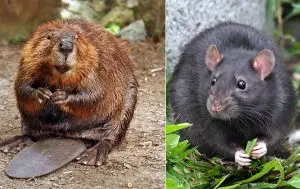
Being a Canadian I, of course, see myself as a beaver and not a rat. While I know that both are rodents I will make the claim that acting more like beavers and less like rats is a superior response to our climate crisis. I will use the metaphor that “beaver thinking” leads to activities that are a good metaphor for those focussed on climate mitigation and while those of you who are overly focussed on climate adaption are “thinking like a rat”: survival at any cost, but with a much lower quality of life as an unintended result. The punchline is this: the current shift to a focus on adaption – because mitigation is not happening – means that most of us are thinking like a rat and that while we may ‘survive’ it is a survival where our quality of life is so low that it is barely worth living. Instead, we should work as hard as beavers to create an environment that is rich, diverse and thriving by focussing on climate mitigation. This isn’t as hard as it seems, as long as you see yourself as a beaver and not a rat. Personally, that means I have had to opt out of the ‘rat race’ because even if I win – I’m still a rat!

Let’s start by asking: what do beavers do that is so wondourful? They create an environment rich in life – rich for them and many other species. Their dams create vast ponds that are the most biologically rich ecosystems within the forest. They cannot thrive without creating the environment which allows them to live in – just like people. Here is what scientists tell us about how beaver create a rich environment.
When the flow of water in a stream is slowed by the beaver dam, soil and organic sediment carried in the water usually settle to the bottom of the beaver pond. When beaver subsequently abandon a locality, their dam eventually breaks and the pond drains leaving a large open space. A meadow usually grows on the nutrient-rich soils that once formed the bottom of the pond. These “beaver meadows” usually have more light penetration, higher soil moisture, more nitrogen and a different vegetation than the adjacent riparian forest. In the Appalachian Plateau region of New York, active beaver impoundments contained “significantly more bird species and a greater average number of bird species than abandoned beaver ponds and control sites with no record of beaver occupation (Grover and Baldassarre 1995).” In the Upper Piedmont of South Carolina, the abundance, richness and diversity of reptiles were significantly higher at beaver impoundments than at unimpounded streams.
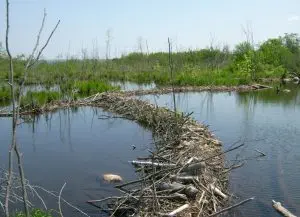
And what do rats do? They survive on almost any type of food, anywhere, but especially where people live. It seems that wherever people go rats go with them. We may think of dogs as are a best friend, but the sad reality is that wherever people have travelled in the world rats have hitch-hiked with them. Why? We feed them and provide safe places for them to hide in. Our cities and villages are perfect for rats: food scraps and garbage galore! Of course, this also means we have experienced disease and mass death like the bubonic plague. Because of the plague we are understandably afraid of rats and find them disgusting. Then why is that in our cities the rat populations continue to increase? Why is that we don’t stop feeding them by allowing garbage to put out that is not in a metal rat-proof container? Why is that that we seem to be behaving more and more like rats in that we will do anything to survive, under any conditions – no matter how horrible – and just adapt and call that ‘being realistic’ and ‘practical’ when it just means are we acting like an animal and just adapting?
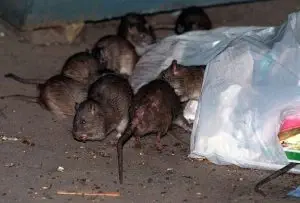
But it gets worse! How would you like to eat rats? Not once in a while – but as your main source of protein? This is what scientists now think happened on Easter Island. The story goes like this.
Easter Island, once lush with subtropical broadleaf forest, was left barren and vast seabird colonies were destroyed after the arrival of man. There is new evidence that human beings alone may not have been responsible for the destruction after all: it appears that the real culprits were rats – up to three million of them. Almost all of the palm seed shells discovered on the island were found to have been gnawed by rats. Thousands of rat bones have been found, and crucially, much of the damage to forestry appears to have been done before evidence of fires on the island. The result? The trees went extinct and so did 20 other forest plants, six land birds and several sea birds. So there was definitely less choice in food, a much narrower diet, and yet people continued to live on Easter Island, and food, it seems, was not their big problem. For one thing, they could eat rats. As J.B. MacKinnon reports in his new book, The Once and Future World, archeologists examined ancient garbage heaps on Easter Island looking for discarded bones and found “that 60 percent of the bones came from introduced rats.” So they’d found a meat substitute. Some would say that this is a success story because clans and families on Easter Island didn’t fall apart. It’s true, the island became desolate, emptier. The ecosystem was severely compromised. And yet, say the anthropologists, Easter Islanders didn’t disappear. They adjusted. They had no lumber to build canoes to go deep-sea fishing. They had fewer birds to hunt. They didn’t have coconuts. But they kept going on rat meat and small helpings of vegetables. They made do.
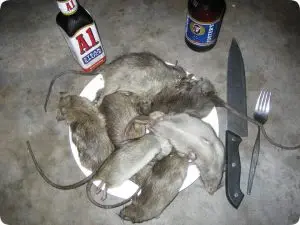
I think that as many people wake up to the reality of the climate crisis and see that it is real, as is now happening in Australia, the debate is going to shift to this question: “Do we focus more on mitigation or adaption?” I am afraid that with our short term thinking we will choose over-focusing on adaption and think of mitigation as beyond our reach. All this does is make us rats in a giant rat race. It is an animal level thinking that undermines the very qualities that have made us successful as a species – the ability to look ahead and create conditions within which we can thrive. Rather, we need to think and act beavers: our environment is what we create. We are responsible for it and when we do this properly not only do we thrive, but so do all the other plants and animals around us. So how about being a real Canadian patriot and choosing to be a beaver instead of a rat!
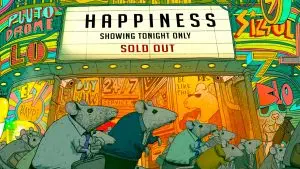
Leave a Reply